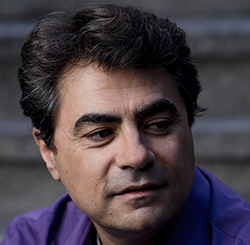
Gustavo Díaz-Jerez
One of the foremost Spanish pianists and composers of his generation, Gustavo Díaz-Jerez has gained an international following among audiences as well as unanimous critical acclaim for his performances of both contemporary music and the time honored repertoire.
Born in the Spanish Canary Islands, Gustavo Díaz-Jerez studied piano with J. A. Rodriguez at the Conservatorio Superior of Santa Cruz (Tenerife), and subsequently with Solomon Mikowsky at Manhattan School of Music in New York City, where he also studied composition with Giampaolo Bracali and Ludmila Ulehla.
Gustavo Díaz-Jerez has performed extensively throughout Europe, Asia, South America, Australia, the UK and the USA, in many of the world’s most renowned halls, including Carnegie Hall and Alice Tully Hall in New York, Royal Festival Hall in London, Sydney Opera House in Sydney and numerous other eminent venues. He has performed as soloist with many of the world’s great orchestras, such as the Berlin Simphoniker, The Budapest Festival Orchestra, The Turin Symphony, The Northern Sinfonia, as well as the major Spanish orchestras. He has collaborated with such conductors as Ivan Fischer, Cristian Mandeal, Matthias Bamert, Gunther Herbig, Adrian Leaper, and others. He has been invited to play at various international music festivals, including the Festival Internacional de Canarias, La Roque d’Anthéron, Quincena Musical Donostiarra, Festival Internacional de Santander, Granada, etc.
His works have been performed widely by soloists and ensembles around the world. In 2011 his orchestral work Ymarxa, commissioned by the Festival de Música de Canarias was premiered by the Royal Philharmonic Orchestra under the baton of Charles Dutoit. His works are published by Composer's Edition.
His compositional language may be defined as “algorithmic spectralism”, merging elements of the spectralist movement (Grisey, Murail, Radulescu, etc.), in which timbre plays a fundamental role, with processes derived from mathematical disciplines such as cellular automata, L-systems, fractals, genetic algorithms, number theory, spectrum analysis, etc. Needless the say, the use of the computer is indispensable, usually producing results in the form of electronic music. However, his main interest is not in electroacoustics, but to “transcribe” these results using traditional instruments. This requires a very careful and elaborate process of quantization of melodic, rhythmic and timbre elements, so it can be adequately performed by human players. These transformations, however, leave intact the essence of the original process. An accomplished programmer as well, Gustavo Díaz-Jerez is author of FractMus, a Windows program that explores algorithmic/generative composition using algorithms derived from number theory, non-linear equations, cellular automata, and fractals. He has written a number of articles on the subject that have been published by prestigious publications such as Electronic Musician.
He is a member of the Royal Academy of Arts of the Canary Islands and, since 2002, a professor piano at the Superior Conservatory of Music of the Basque Country, Musikene.